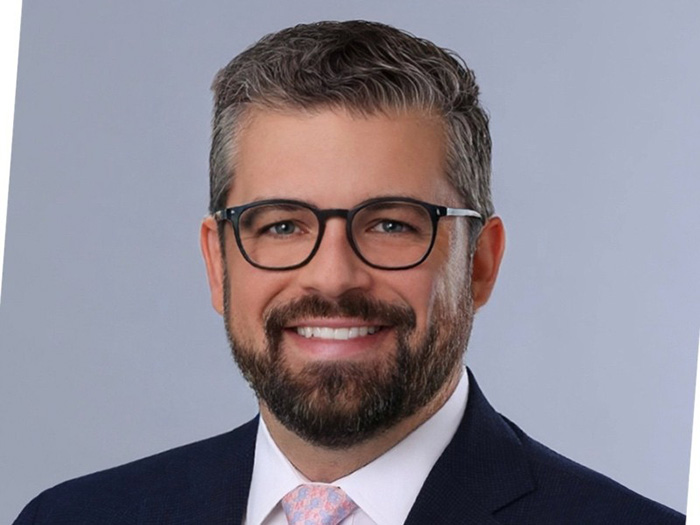Sponsored Content by QBE North America
4 Keys to Providing Competitive Employee Health Benefits While Containing Costs

Employers are trying to balance how to provide the most compelling benefits possible to attract and retain talent, while also managing costs and protecting their organization’s financial well-being.
It’s a daunting challenge, considering that health care coverage accounts for one-third of total employee compensation and cost increases show no signs of slowing down. The pipeline of new, very expensive treatments will offer hope for many, but add financial hurdles to those responsible for the lion’s share of the expense, employer health plans.
Fortunately, for employers who self-fund their health plans, managing rising health care costs while ensuring quality care is possible if they follow the following four broad strategies.
Get Ahead of Chronic Health Conditions

Tara Krauss, Head of Accident & Health Insurance, QBE North America
Chronic conditions have a massive impact on health care plan costs. Recent QBE analysis shows that upwards of 90% of health insurance claims over $100,000 are for individuals who have more than one chronic illness, according to Tara Krauss, head of Accident & Health insurance for QBE, referencing results from QBE’s most recent Accident & Health Market Report.
Most health plans renew on a calendar year basis. Thus, as the health plan renewal season approaches, now is the time for human resources and finance teams to take a closer look at what programs they have in place, or perhaps are missing, to help staff prevent chronic diseases to both enhance overall well-being and reduce expenses related to the health plan.
“Obesity, diabetes, heart disease and chronic kidney disease — a lot of those conditions are preventable by living a healthier lifestyle,” Krauss said. “For instance, although the pandemic’s effect on health has been nuanced and varied, stay-at-home orders and physical distancing guidelines led to an even greater sedentary lifestyle for all age groups.”
Changes in people’s eating patterns during the pandemic must not be underestimated. “We’ve seen an increase in body mass index,” Krauss said. “Trends that were already driving chronic diseases continued to worsen.”
Many people delayed or could not get routine medical care, including cancer and other high-risk screenings, due to COVID fears and availability complications during the pandemic. “When care has been postponed, the recovery will almost always be more difficult and the treatment more expensive,” Krauss added.
Mental health is another area that cannot be overlooked when choosing employee wellness offerings. “Mental health and physical health are intertwined,” said Krauss, “and the pandemic has taken its toll on both. We saw medical stop loss (MSL) claim frequency more than double for mental health from 2019 to 2020. In 2021, the frequency declined, yet remained well above the 2019 level.”
It’s important to choose cost containment vendors who can proactively help employees manage both sides of the physical and mental health equation. “Someone on several different prescription medications for multiple chronic conditions is more likely to get depressed, and depression can lead to an inability to properly care for one’s own physical wellbeing such as taking medications prescribed, getting proper sleep and exercise. Providing resources to help that person stay on the right path is critical,” Krauss said.
Combining traditional health care monitoring with behavioral health services, offering incentives for exercise programs, and providing lifestyle management and wellness benefits can improve employees’ ability to prioritize their health.
“Consider low-to-no copays for preventative, behavioral programs such as weight loss or wellness coaching to encourage member engagement in such programs. And, if you’re trying to bring people back into the office, consider offering healthy snacks, work/life balance support, and team health challenges to motivate employees,” Krauss added. “We’re all in this together and let’s get healthy.”
Preparing for Emerging High-cost Treatments
Medical advancements can revolutionize care and offer hope for previously untreatable conditions, but some come with a very high price.
The rise of cell and gene therapies is a prime example. The cost to an employer for cell or gene therapy can exceed $400,000 per individual for basic cell therapy and millions of dollars for gene therapy. More than 1,000 cell and gene therapies are under development worldwide, and the market is expected to triple in size from 2021 to 2026. The FDA has approved six CAR-T therapies (a form of cell therapy) as of 2022 and is expected to approve more than 70 new cell and gene therapies by 2030.1
Organ transplants are also on the rise. “For the first time, more than 40,000 transplants are expected to take place in the U.S. this year,” said Krauss. “This trend reflects not only the increased need for transplants, but also advancements in treatments that increase availability. Organ transplants from deceased donors increased by 11% in 2021 from the prior year.”
When even one covered individual requires such a high-cost treatment, it can greatly stress the financial viability of an employer’s self-funded health insurance plan. Traditionally, medical stop loss insurance has been a tool used by employers to transfer this risk. Employers can tailor the risk they bear by choosing a deductible that matches their appetite for risk, which typically correlates with an employer’s population size and cash flow available.
“In the past, some of the largest employers went without medical stop loss protection,” added Krauss. “But recently, some have added medical stop loss coverage due to the growing prevalence of high-cost treatments.”
Specialized coverage for organ transplants is offered and can be used in tandem with medical stop loss to effectively mitigate rising costs.
“A way for employers to stabilize and mitigate organ transplant risk is for them to carve the transplant risk out of the stop loss cover,” Krauss said. “Most stop loss carriers will provide a discounted stop loss rate when the organ transplant risk is carved out. And that discount oftentimes will subsidize the cost of the organ transplant policy and reduce the chance of a significant stop loss rate increase the following year.”
Consider Medical Stop Loss Captives
Employers usually choose to self-fund their health care plans to gain greater visibility and control over their health care spend, while using medical stop loss coverage to manage volatility. Acquiring medical stop loss coverage within a captive structure can further increase that visibility and control.
“An employer reduces expenses that would otherwise get passed through to the insurance carrier and benefits from reduced volatility in claims, optimizing cost containment strategies and transparency in reporting,” Krauss noted.
From a group captive perspective, “it’s about bringing together like-minded employers to smooth out the experience through pooling their risk — an employer benefiting from others having significantly better risk for a few years if they have an outlier year, but collectively the group benefits from partnering with like-minded cost and outcome driven CFOs and risk partners. And if all the employer plans run well in the group, there’s the benefit of getting some of that money back through distributions.”
Whether single parent or group, captives can help stabilize costs and deliver savings otherwise passed to an insurance company.
To operate the captive, employers can lean on companies like QBE to provide support services. “We’ll underwrite the risk, issue the policies and provide cost containment surveillance throughout the policy lifecycle. We’ll run through monthly reporting and help advise the captive on setting appropriate claims reserves,” Krauss added.
“And our clinical risk management nurses will help the employer mitigate costs of outlier claims to reduce unnecessary expenditures to the plan, while also improving the patient experience. In addition, this approach can uncover potential egregious billing practices or site-of-care improvement opportunities.”
Whether it’s adopting plan language to help direct care into centers of excellence or sourcing medications for reduced cost through vendor networks, partnering with a market-leading medical stop loss provider like QBE can make a significant difference for more complex and costly claims.
Choosing the Right Partners
Ultimately, the quantity and quality of health and wellness benefits employers can provide their teams comes down to choosing the right partners who can help contain costs, while ensuring the best health outcomes.
“It really starts with the expertise and resources of the broker they choose,” Krauss said. “And then picking the right vendors — from a plan administrator, provider network and most certainly the pharmacy benefits manager to the medical stop loss provider, who at minimum, should reimburse claims timely, but also help mitigate costs from the first dollar to prevent stop loss claims altogether whenever possible.”
When it comes to selecting a medical stop loss carrier, like any insurance protection, the process can be very transactional, commoditized, and come down to rate. In today’s market, employers must think beyond rates and consider the overall service experience they receive from a carrier.
“It’s crucial to consider how well MSL carriers provide proactive and retroactive cost containment support. Does the carrier have deep technical and clinical expertise, such as in-house medical risk management consultants who are licensed Registered Nurses certified in case management? What is the claim reimbursement experience like? Is it expeditious? Does the carrier leverage sophisticated data and analytics models to better understand and appropriately price risk, and thereby minimize the potential for large rate increases from one year to the next?” Krauss added.
Understanding the information security controls a partner has in place is also critical in the current climate of heightened cyber risk and privacy concerns.
“When a carrier underwrites an employer’s health plan population, they’re obviously gaining access to claims data,” Krauss said. “Given the sensitivity required, employers should be sure the carrier has rigorous risk and control frameworks and business continuity plans in place, as it’s often overlooked.”
For more information, visit: https://www.qbe.com/us/ah.
1 https://www.sciencedirect.com/science/article/pii/S1359644621003901
This article was produced by the R&I Brand Studio, a unit of the advertising department of Risk & Insurance, in collaboration with QBE North America. The editorial staff of Risk & Insurance had no role in its preparation.










